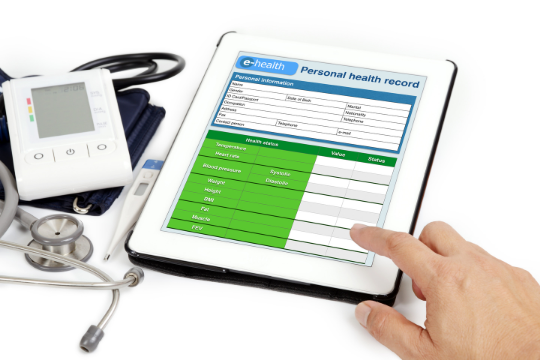 If you are looking to automate your accounting, custom software development firms won’t disappoint you. Relying on conventional Excel spreadsheets for accounting is just like shutting the doors of progress and growth for your business. Automated accounting systems are no more luxuries but the need of the day. Whether you are a new startup or a well-established local business, you need to automate your accounting to optimize your financial affairs.
If you are looking to automate your accounting, custom software development firms won’t disappoint you. Relying on conventional Excel spreadsheets for accounting is just like shutting the doors of progress and growth for your business. Automated accounting systems are no more luxuries but the need of the day. Whether you are a new startup or a well-established local business, you need to automate your accounting to optimize your financial affairs.
Most businesses are stuck with typical accounting systems without even realizing the true potential of invoice processing automation. Equipping your accounts department with customized automated accounting solutions can help you to redefine the entire process.
Accounting Automation for Business Transformation
Accounting automation software allows for the entire process to happen electronically without anything being written on paper. Transactions are entered into a computer system where they are tallied and reconciled against other data points on that same electronic ledger or spreadsheet – for example, a bank statement or records in QuickBooks or Quicken.
Imagine spending time on what’s really important rather than filling out invoices and payroll forms, dealing with taxes, or double-checking everyone’s work.
Benefits of Automation in Accounting for SMBs
An accounting automation system that delivers information such as obligations, moving balances, and other critical information can help you to optimize, streamline and improve the accounting tasks, with a higher level of accuracy.
Automation can provide your company with a number of benefits—cost savings always being the most prominent one. Here are some other benefits you might experience:
- Increased productivity with reduced errors and increased speed in processing transactions
- Elimination of paperwork and distribution channels for specific types of transactions
- Reduced handwork/digits by analyzing additional data including images in order to improve reports/transactions analysis capabilities
- Development opportunities (e.g. ability to create customized reports on-demand, improved data accuracy)
- Increase in visibility/transparency across processes (e.g. ability to track work in progress, monitor progress of a task or project across different departments, etc.)
Accounting automation software has made a big difference in the way many people handle their business finances. Before this, accountants were needed to process income and expenses, balance checkbooks, and track outstanding payments. This responsibility can now be handled by accounting automation software.
Ways to Automate the Accounting Process
You are convinced that you need to automate your accounting for better control over your business’s financial matters. The next step is to learn how to effectively make it happen by utilizing the available resources. Automated bookkeeping is easy when you have access to the right resources and tools. From QuickBooks automation to deploying customized accounting automation systems, you have different available options. Here are some effective ways to automate your accounting for small-medium businesses.
It can be tempting for entrepreneurs to do everything themselves, but accounting tasks aren’t the best use of your time. Instead, you should consider automating some or all of your accounting processes.
1. Partnering With Software Firms for Custom Automated Software
There are countless stages of accounting automation and using different tools for every step can be daunting. Instead of wasting resources on various tools, the best investment is to hire the services of a professional software development firm.
This way, you can get accurate solutions as per your business needs without compromising on any aspect of your business. Join forces with professional software development and let them study the exact accounting needs of your business to come up with precise and accurate accounting automation software.
2. Use Cloud Accounting Software
Cloud accounting is a cost-effective way to handle your accounting needs and it doesn’t require any specialized knowledge. Using automated systems will allow you to do more with less, which means you can focus on your core business while letting the tools do the heavy lifting.
Automated accounting software can provide financial information across multiple platforms including your PC, tablet, or mobile phone. These systems let you generate reports and provide regular updates on revenue and expenses, so you have maximum visibility into your numbers from anywhere at any time.
3. Monitor Your Cash Flow Regularly
You need to make sure that there’s always enough cash in the bank to cover business expenses and stay profitable when unexpected costs arise. Financial information, such as cash flow reports, is a critical source of knowledge you can use to maintain adequate levels of both cash and liquid assets.
There are many good software programs to help you analyze your business’s financial situation. These systems can let you quickly calculate the most important metrics such as your current cash balance, availability of financing, or how much money is left in the business over a set period of time. The numbers displayed in these reports will change over time, so it’s important to check on them regularly and adjust your business operations based on this information.
4. Automate the Billing Process
Billing customers is an essential part of running any business. Your company needs payment from your clients so your business can stay afloat and pay your employees. This means you need efficient software that will generate invoices quickly.
Automated billing software will save you time by allowing you to send out invoices on a regular basis. You can choose to send invoices to all your clients at the end of each month, or only bill certain clients who require payment on a specific schedule. Some billing systems even let you customize the invoice template, so it’s unique for each client and includes all the information they need to receive their payment in a timely manner.
Conclusion
The best way to avoid paying an accountant would be to get things done on your own. You may not know how everything works, but you’re guaranteed to learn something in the process. Automating accounting for small businesses is a valuable shift that will save you the money of hiring an accountant and make life easier for yourself.
Sunvera Software develops next-level software applications from start-to-finish. We are a premier software and mobile app development agency specializing in healthcare mobile app development, custom mobile app development company, telehealth software, sales dashboards, custom mobile app development services, retail software development, supply-chain software, ecommerce, shopify, web design, iBeacon apps, security solutions and unified access software.
We are proud partners with Amazon AWS, Microsoft Azure and Google Cloud.
Schedule a free 30-minute call with us to discuss your business, or you can give us a call at (949) 284-6300.
 Crowdfunding has become the pulse of the internet, a way to get creative juices flowing and support an idea in other words. With all the money and free resources out there for people that want to create something, why are charities turning to a crowdfunding website? Well, it turns out these types of fundraising sites are increasing in popularity because they offer fundraisers an opportunity to reach out directly to their fans or supporters.
Crowdfunding has become the pulse of the internet, a way to get creative juices flowing and support an idea in other words. With all the money and free resources out there for people that want to create something, why are charities turning to a crowdfunding website? Well, it turns out these types of fundraising sites are increasing in popularity because they offer fundraisers an opportunity to reach out directly to their fans or supporters. If you own a business, you are probably familiar with the term “point of sale” (POS). A POS system is essentially a computerized cash register that businesses use to keep track of inventory, sales, and other important aspects of their company.
If you own a business, you are probably familiar with the term “point of sale” (POS). A POS system is essentially a computerized cash register that businesses use to keep track of inventory, sales, and other important aspects of their company. A hospital information system is an electronic healthcare system that provides access to patient information, health care facility and physician staff activities, patient demographics, clinical data, and hospital activities for use in business intelligence.
A hospital information system is an electronic healthcare system that provides access to patient information, health care facility and physician staff activities, patient demographics, clinical data, and hospital activities for use in business intelligence. There are certain terms that businesses need to be familiar with in order to operate properly so there is no legal trouble. Before forming a business, entrepreneurs need to know the difference between a patent, copyright, and trademark. It can be frustrating to learn the difference as there are many similarities between the three but it is important for every business owner to understand them.
There are certain terms that businesses need to be familiar with in order to operate properly so there is no legal trouble. Before forming a business, entrepreneurs need to know the difference between a patent, copyright, and trademark. It can be frustrating to learn the difference as there are many similarities between the three but it is important for every business owner to understand them.  Which is more important: the equipment or the people? In developing telehealth solutions, it’s often easy to get caught up in the excitement around technology and forget most of the responsibility falls on people.
Which is more important: the equipment or the people? In developing telehealth solutions, it’s often easy to get caught up in the excitement around technology and forget most of the responsibility falls on people. Over the past decade, online education has arguably emerged as a viable alternative to traditional classroom-based learning. Online communication and interactions have helped people connect across distances and can help schools deliver their courses in a way that is convenient for learners. This evolution is one of the many future trends predicted to shape the future of online education as it exists today and in years to come. As online education matures, there are new techniques and tools used by instructors to provide a more interactive learning experience for their students.
Over the past decade, online education has arguably emerged as a viable alternative to traditional classroom-based learning. Online communication and interactions have helped people connect across distances and can help schools deliver their courses in a way that is convenient for learners. This evolution is one of the many future trends predicted to shape the future of online education as it exists today and in years to come. As online education matures, there are new techniques and tools used by instructors to provide a more interactive learning experience for their students. In healthcare, mobile apps have become an integral part of healthcare delivery. They serve a variety of purposes and can be customized to meet the needs of healthcare providers in urgent care or medical offices. With so many different healthcare app development companies out there, it’s important that you know what to look for before hiring one.
In healthcare, mobile apps have become an integral part of healthcare delivery. They serve a variety of purposes and can be customized to meet the needs of healthcare providers in urgent care or medical offices. With so many different healthcare app development companies out there, it’s important that you know what to look for before hiring one. The cloud is changing every business, from start-ups to Fortune 500 companies. The benefits of the cloud are so great and widespread that it is quickly becoming an essential part of doing business today. But developing apps in the cloud presents several challenges that developers have never had to face before.
The cloud is changing every business, from start-ups to Fortune 500 companies. The benefits of the cloud are so great and widespread that it is quickly becoming an essential part of doing business today. But developing apps in the cloud presents several challenges that developers have never had to face before. So, you’ve found a niche? Good for you! But now comes the real challenge: how to grow your ecommerce site with marketing.
So, you’ve found a niche? Good for you! But now comes the real challenge: how to grow your ecommerce site with marketing.
